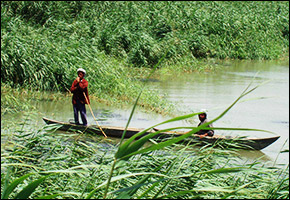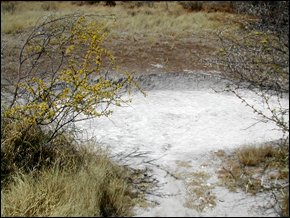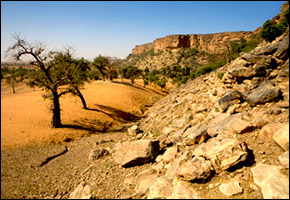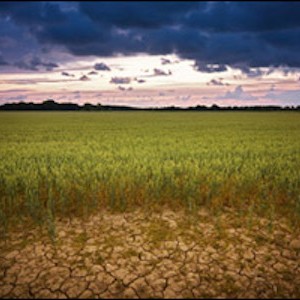Drought Strikes ‘Garden Of Eden’ Marshes In Iraq
Once described as the place of earthly paradise and source of life, the “Garden of Eden” marshes in southern Iraq threaten to become a cracked relic of a dying nature. Stricken with a severe drought in Iraq and neighboring countries, the region — the suspected site of the biblical Garden of Eden — is drying up again, just as it was starting to recover after Saddam Hussein drained its lakes and swamps in the 1990s, the Associated Press reported.
The Iraqi marshes – the vastest wetlands in the Middle East – were once home to an array of birds and fish. Fed by the periodic flooding of the Tigris and Euphrates rivers, the extensive region in today’s provinces of Maysan, Dhi Qar and Basra boasted fertile farm lands that nurtured the Marsh Arab culture for thousands of years. But today, the debilitating effects of human abuse and dry weather have reduced the marshes to a little more than a vast wasteland.
In 1991 Saddam Hussein, a Sunni Muslim, built a network of dams and earthen walls to dry the marshes, as the region had sheltered many Shiite rebels from the Iran-Iraq war of the 1980s and the rebellion after the Gulf War. By the time Saddam was deposed in 2003, the marshes had dried up by 90 percent of their previous size.
While a United Nations project launched in 2004 re-flooded more than half of the region by 2006, the severe droughts of the last two years threaten to disrupt the restoration process, which relies on water flow from the Tigris and the Euphrates. Iraq, which lies downstream, depends on its neighbors for its water supply, but constructions of a series of dams along the upper parts of the rivers has further reduced the already inadequate water flow reaching Iraq, government officials said.
Last month, the Iraqi government and the Food and Agriculture Organization (FAO) at the U.N. announced a new $47 million program to restore the marshes, improve the lives of the Marsh Arabs and restock the lakes with fish suited to life in shallow waters with high salt concentrations.
Sources: Yahoo News, SAHRA
Inset: Marshes before the dry spell (April, 2003). Image courtesy of the US Army Corps of Engineers/Hassan Janali.
, a Bulgaria native, is a Chicago-based reporter for Circle of Blue. She co-writes The Stream, a daily digest of international water news trends.
Interests: Europe, China, Environmental Policy, International Security.











Leave a Reply
Want to join the discussion?Feel free to contribute!